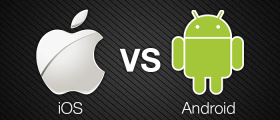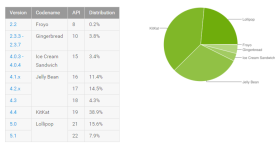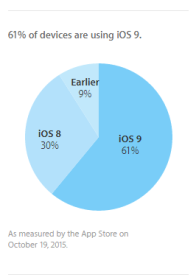 Today JFTB takes a look at an increasing problem in the mobile device OS version fragmentation.
Today JFTB takes a look at an increasing problem in the mobile device OS version fragmentation.
I want to put aside all fan-boy arguments and just take a look take a look at some facts.
Apple is both famous and infamous for their strict framework, while Android earned the reputation of an more “open” platform, even if it’s still restricted. Apple has very early identified the risks of free choices and that the wishes of the end users is not always for the best in the long run.
The “openness” of Android now seems to slowly creep up behind to bite themselves in the tail. Apple has a very strict device and OS version life cycle policy which ensures that almost all users will have the same experience on their devices. While looking at Android, many users complain they can’t use the same features as someone else, or install an app that a friend has. And why is that?
Well, to start with you can run Android on almost any device you like. It’s a very versatile OS. This brings a lot of possibility’s to the platform. While looking at iOS, you can “only” run it on an Apple device, which limits your choice of hardware. While both options has it’s pros and cons, I truly believe that the freedom of hardware choice is going to be the death of Android in the long run. And here is why.
 This picture illustrates the screen resolutions for all known Android devices today. As you can see we have a couple of dozens of screen resolutions and ratio aspects to consider. How easy do you think it is for an app developer to tackle this? Do you think he can make the app fit well on all devices? (Source: opensignal.com)
This picture illustrates the screen resolutions for all known Android devices today. As you can see we have a couple of dozens of screen resolutions and ratio aspects to consider. How easy do you think it is for an app developer to tackle this? Do you think he can make the app fit well on all devices? (Source: opensignal.com)
Next picture illustrates the same thing. All resolutions for all iOS devices. Which OS do you think it’s easier to develop an app or game with high device compatibility for? If you’re an app developer business, which platform would you pick? I have personally tested quite a few Android devices, everything from $100 budget devices to $900 high end devices, and I have stumbled onto app incompatibility issues many times, but never on an iOS device.
you think it’s easier to develop an app or game with high device compatibility for? If you’re an app developer business, which platform would you pick? I have personally tested quite a few Android devices, everything from $100 budget devices to $900 high end devices, and I have stumbled onto app incompatibility issues many times, but never on an iOS device.
The next issue at hand is the actual OS version life cycle management. This issue is also based on the same facts as previous example: The amount of different hardware available to the platform and the OS. I can go down to my local hardware dealer today and buy myself a brand new $300 dollar Android budget  phone that runs Android 2.3. How ever, if i buy an iPhone I will always get it with the latest OS. Also, because there’s so many manufacturers of hardware that can run Android, there’s no real version life cycle management for Android. The picture to the left illustrates all active Android devices today and what version OS the run. As you can see, only 23,5% of all active devices run the latest version of Android. (Source: android.com) As a developer this means you have to do a lot of compromises when developing an app for Android. This issue is also increasing every year, making the fragmentation wider for every new device and every new version of Android.
phone that runs Android 2.3. How ever, if i buy an iPhone I will always get it with the latest OS. Also, because there’s so many manufacturers of hardware that can run Android, there’s no real version life cycle management for Android. The picture to the left illustrates all active Android devices today and what version OS the run. As you can see, only 23,5% of all active devices run the latest version of Android. (Source: android.com) As a developer this means you have to do a lot of compromises when developing an app for Android. This issue is also increasing every year, making the fragmentation wider for every new device and every new version of Android.
If we take a look at iOS and Apple with it’s strict life cycle policy, we can clearly see the benefits of hardware specific OS and version life cycle management. With 61% of the users running the absolute latest version and a total of 91% of the users running a supported version of the OS, which platform would you chose to develop for? (Source: apple.com) Not only are these great numbers, they also increase for the better every year compared to Android. Meaning the version fragmentation on iOS gets smaller every year, while for Android the fragmentation gets worse. If this fragmentation of versions and screen resolutions for Android gets to run wild for another few years, what do you think will happen? Comment below what YOU think.
a look at iOS and Apple with it’s strict life cycle policy, we can clearly see the benefits of hardware specific OS and version life cycle management. With 61% of the users running the absolute latest version and a total of 91% of the users running a supported version of the OS, which platform would you chose to develop for? (Source: apple.com) Not only are these great numbers, they also increase for the better every year compared to Android. Meaning the version fragmentation on iOS gets smaller every year, while for Android the fragmentation gets worse. If this fragmentation of versions and screen resolutions for Android gets to run wild for another few years, what do you think will happen? Comment below what YOU think.

